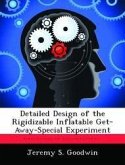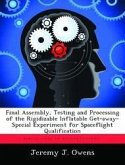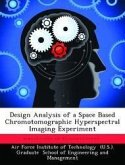As space structures grow in size and complexity, their weight and cost in- crease significantly. The use of inatable and rigidizable structures offers drastic improvements in all areas of spacecraft design. However, the Air Force and industry are hesitant to utilize unproven technologies in new designs. Therefore, the goal of this experiment is to verify and validate ground testing of ination and rigidization methods for inatable space structures in a zero-gravity space environment. The Rigidized Inatable Get-Away-Special Experiment is an autonomous, self-contained Space Shuttle experiment that will inate and rigidize several structures. After ination, the experiment will perform a structural analysis by exciting the rigidized structures and collecting vibration data. This thesis presents the preliminary design of the experiment and its major assemblies; including the structure, power, command and control, data handling, sensor, ination, rigidization, and excitation systems. A systems engineering approach is utilized to make design decisions based on a total system and life-cycle perspective. The systems engineering methodology focuses on defining objectives, requirements, and constraints; and then using an iterative process to develop a design that meets them.
Hinweis: Dieser Artikel kann nur an eine deutsche Lieferadresse ausgeliefert werden.
Hinweis: Dieser Artikel kann nur an eine deutsche Lieferadresse ausgeliefert werden.







